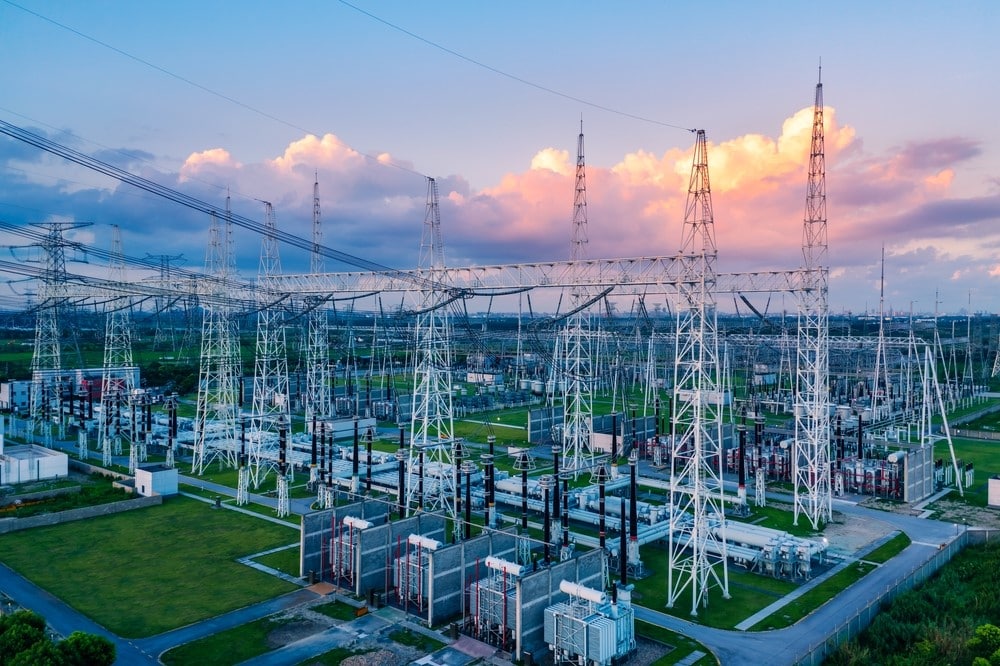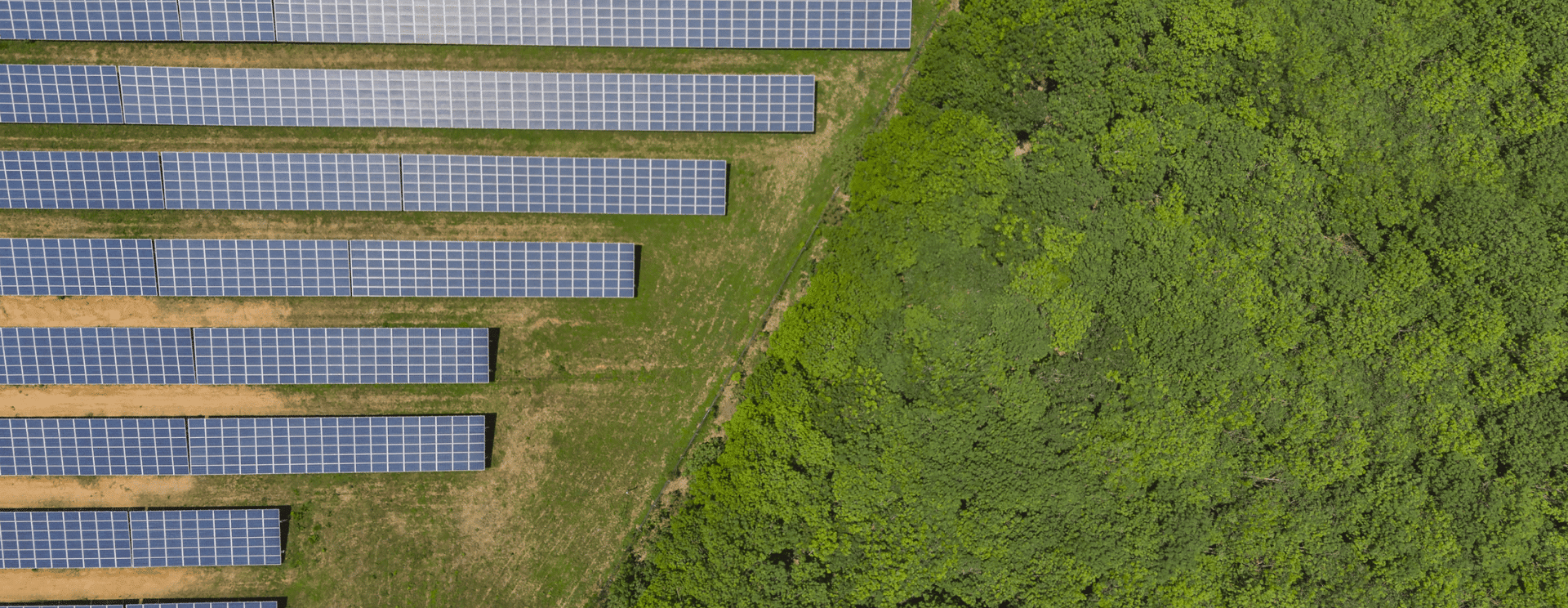Who Manages the U.S. Electrical Grid?

Each day, more than 160 million customers across the United States rely on electricity flowing through hundreds of thousands of miles of transmission and distribution power lines to power their homes, cook food, and heat water.
Americans use a lot of power – millions of MWh of electricity daily. So many people depend on consistent and reliable electricity to live, and ensuring power is available when it’s needed most is a monumental task. But who is responsible for the grid itself?
The answer is complicated.
How is the Electrical Grid Divided?
The continental United States is huge, so it makes sense to break it up into regions.
Three major interconnections comprise the U.S. electrical grid – the Eastern Interconnection, which encompasses everything east of the Rockies; the Western Interconnection, covering west of the Rockies; and the Texas Interconnection, which includes most, but not all, of Texas.
The Eastern and Western Interconnections stretch north into Canada, except for Quebec, which operates its own AC power grid that connects to the Eastern Interconnection.
From Interconnections to Councils…
Within the three U.S. interconnection systems are six regional councils called Electric Reliability Organizations. These non-profit companies work on behalf of their regions to provide stable electricity to consumers and uphold NERC standards. They include:
- Northeast Power Coordinating Council (NPCC)
- Reliability First (RF)
- Midwest Reliability Organization (MRO)
- SERC Reliability Corporation (SERC)
- Texas Reliability Entity (TRE)
- Western Electricity Coordinating Council (WECC)
The councils are managed and approved by the Federal Energy Regulatory Commission (FERC), with responsibilities delegated by the North American Electric Reliability Corporation (NERC). Together, the regional councils and NERC maintain and improve the grid across their respective zones.
Often, it means sharing information and resources across all the councils and NERC, known as the ERO Enterprise. They develop messaging and guidance for utilities and other entities and innovate the grid’s performance without duplicating efforts.
Subregions and Other Markets
Some customers may be living in one of several subregions or coverage areas.
For example, people in New York live in a Wholesale Electric Power Market, in this case, NYISO. NYISO stands for the New York Independent System Operator and maintains a steady and reliable power supply for the state’s electrical customers. It also regulates New York’s competitive generation program.
Other coverage areas may include traditionally regulated or competitive retail markets. Depending on the state, it could impact how and what energy options are available. In traditionally regulated states, customers must buy electricity from local utilities serving their area. As a result, selection is limited.
For states with competitive markets, customers have several suppliers, opening the door for more competition and options, including retail choice. Retail choice allows customers to choose who provides their electricity and even how it is produced. Solar installers may find these states easier to build and work in, especially since many solar and other renewable projects in traditionally regulated states tend to be utility-owned.
FERC, NERC, and the Chain of Command
It might seem confusing with so many federal agencies, commissions, organizations, and oversight committees floating around, but the chain of command is clear.
FERC is tasked with managing electricity transmission of all types, including gas pipelines and hydropower sources. Every energy production source, transmission line, and distribution substation falls under its purview. But it can’t monitor thousands of generation plants without help.
Through the Federal Power Act, FERC assigned NERC the responsibility of implementing and monitoring standards and regulations across every region. In turn, NERC delegates power to the six regional transmission organizations (RTOs). The RTOs work to identify areas of opportunity, improve efficiency, ensure compliance, and maintain the overall system alongside utilities.
Independent System Operators (ISOs) also handle grid operations, though they are smaller than their regional counterparts. Unlike RTOs, which can cover a multi-state region, ISOs have smaller footprints, generally contained in one state. Both maintain fair competition in their areas and make sure power suppliers have access to the electrical grid, including solar energy generators. According to the Environmental Protection Agency (EPA), about two-thirds of electricity customers live in areas managed by an RTO or ISO.
States Get Their Say, Too
Just when there might be enough electricity generation oversight, the states jump in to take on some of the load.
Public utility commissions regulate pricing in real-time and have the authority to determine where new power generators and transmission systems go. These organizations also have the power to raise and lower electricity, gas, and water rates. PUCs manage costs and quality and maintain the system for all customers, but doesn’t extend to municipal and cooperative utilities.
States also have a fair amount of say in their electricity systems. California, New York, and Texas have been on the frontlines, developing clean energy plans to grow renewable energy sources in their states. They’ve also been instrumental in establishing and promoting reliability and efficiency campaigns to reduce reliance on fossil fuels like coal and oil.
Utilities Are the Backbone of the Whole System
Regulators are great for the public and the electrical grid but don’t produce the energy needed to power our daily lives. That distinction falls on the thousands of electric utilities and public power companies dotting the United States.
Utilities like Duke, Exelon, and Pacific Gas and Electric can be private or public companies, and their goal is to generate electricity and deliver it as profitably as possible to end users. They’re often the boots on the ground, repairing, maintaining, and expanding the infrastructure while finding innovative ways to produce electricity and increase generating capacity.
Who Enforces Rules and Regulations?
It might seem like a twisted web of alphabet-soup agencies and committees, but everything flows from the top down.
FERC is the federal agency in charge of developing and enforcing its rules and investigating internal and external complaints to determine what actions to take. When complaints come in, FERC is tasked with collecting facts tied to the event, issuing preliminary conclusions, and settling the matter with the offending organization or going to a civil trial if a settlement doesn’t happen.
Typically, the agency aims to settle rule violations through the settlement process to quickly issue refunds, address concerns, and reallocate its employees to other pressing tasks. When the violations are especially severe, FERC can issue civil penalty fines, subject the utility to compliance monitoring and disgorgements, or other penalties.
According to the agency, more than $861 million in civil penalties were issued from 2007 to 2022, along with another $586 million in disgorgements.
Additional Monitoring Support
Beyond FERC, there are plenty of support agencies to monitor and enforce its regulations, including NERC, the RTOs and ISOs in each region or state, and state-level public utility commissions.
Like FERC, NERC has a team to monitor complaints, perform investigations, and issue fines or other penalties. It can also elevate concerns to FERC if it has to. The RTOs and ISOs are another set of eyes and ears, using their reach to monitor the markets for violations. When concerns are found, they can refer them to FERC to investigate.
Further down the chain of command, state public utility commissions can investigate and enforce FERC powers when utilities and entities violate siting, construction, or pricing regulations.
Finally, the Department of Justice can step in when violations stretch beyond civil penalties and are considered criminal. Cases where the DOJ might get involved include fraud, among other high-level crimes.
Many Hands Make Light Work
Millions of people rely on consistent electricity to live their daily lives, so the system has to work well for everyone. From the highest federal levels down to the local power company, every organization is on the same page and follows the same rules.
FERC’s oversight and supporting agencies and committees ensure the lights stay on and prices remain manageable. The entire chain of command has overlapping structures meant to keep a watchful eye on utilities and other entities without stressing out organizations with a mountain of investigations.
The result is a powerful series of checks and balances helping us power our future today, tomorrow, and for years to come.


